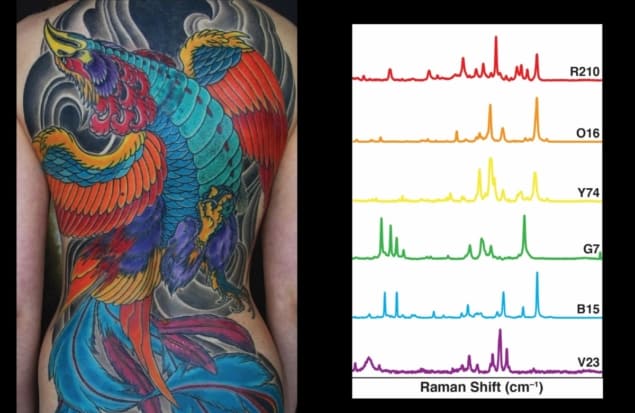
Sometimes, the answers to difficult questions are within plain sight. That is what researchers at the University of Southern California realised as they looked for new ways to find and see cancer cells inside the human body and discovered that the dyes they could use are all around us every day.
Early detection of cancerous cells gives patients the best chance of successful treatment and survival. However, finding those cells can be challenging. In their latest research, reported in Biomaterials Science, Cristina Zavaleta and her team found that they could use common dyes and pigments, like food colouring and tattoo ink, combined with nanoparticles to essentially paint cancer cells – making them easy to spot when compared with normal cells.
Paint by cell type
Finding cancer cells without imaging agents is a difficult job. “For instance, if the problem is colon cancer, this is detected via endoscopy,” Zavaleta explains. “But an endoscope is literally just a flashlight on the end of a stick, so it will only give information about the structure of the colon – you can see a polyp and know you need to take a biopsy.”
But with imaging agents that can specifically paint the cancerous cells, medical professionals have a much easier job. “If we could provide imaging tools to help doctors see whether that particular polyp is cancerous or just benign, maybe they don’t even need to take it,” says Zavaleta.
Inspiration for this work came from an unusual source: Zavaleta’s imagination was sparked in an animation class with Pixar artists. “I was thinking about how these really high-pigment paints were bright in a way I hadn’t seen before,” she says. This led to a trip to a tattoo artist and the realization that these everyday inks could have exciting properties for medical imaging.
Putting the pieces together
The researchers created optical imaging agents using liposomal nanoparticles. These nanoparticles are tiny spheres made of a membrane of lipid, or fat, molecules – the same kind of structures that form the boundaries of human cells – and the colourful dyes can be housed inside. Using nanoparticles made of fats and dyes that are already FDA-approved and used in everyday life is a clever approach for potentially accelerating their clinical translation.
The researchers found that not only do nanoparticles containing these common dyes exhibit improved fluorescence signals compared with the clinical dyes, because more of the dye can be loaded into each nanoparticle, but that they are also significantly more visible inside tumours than in adjacent normal cells. The researchers suggest that this is because the tumours have leakier blood vessels feeding them, letting in the nanoparticles, which cannot enter into normal cells.
The new dyes also have unique spectral fingerprints, which could aid in their specific detection. It could even be possible to use multiple different dyes together to paint different types of cells in unique ways.
Whilst the initial findings in mice models are encouraging, there is still some way to go until this work might help patients in the clinic. However, Zavaleta and her colleagues are hopeful that this study could provide a foundation towards better cancer detection in the future.
